Audi 2014 Annual Report Download - page 271
Download and view the complete annual report
Please find page 271 of the 2014 Audi annual report below. You can navigate through the pages in the report by either clicking on the pages listed below, or by using the keyword search tool below to find specific information within the annual report.-
 1
1 -
 2
2 -
 3
3 -
 4
4 -
 5
5 -
 6
6 -
 7
7 -
 8
8 -
 9
9 -
 10
10 -
 11
11 -
 12
12 -
 13
13 -
 14
14 -
 15
15 -
 16
16 -
 17
17 -
 18
18 -
 19
19 -
 20
20 -
 21
21 -
 22
22 -
 23
23 -
 24
24 -
 25
25 -
 26
26 -
 27
27 -
 28
28 -
 29
29 -
 30
30 -
 31
31 -
 32
32 -
 33
33 -
 34
34 -
 35
35 -
 36
36 -
 37
37 -
 38
38 -
 39
39 -
 40
40 -
 41
41 -
 42
42 -
 43
43 -
 44
44 -
 45
45 -
 46
46 -
 47
47 -
 48
48 -
 49
49 -
 50
50 -
 51
51 -
 52
52 -
 53
53 -
 54
54 -
 55
55 -
 56
56 -
 57
57 -
 58
58 -
 59
59 -
 60
60 -
 61
61 -
 62
62 -
 63
63 -
 64
64 -
 65
65 -
 66
66 -
 67
67 -
 68
68 -
 69
69 -
 70
70 -
 71
71 -
 72
72 -
 73
73 -
 74
74 -
 75
75 -
 76
76 -
 77
77 -
 78
78 -
 79
79 -
 80
80 -
 81
81 -
 82
82 -
 83
83 -
 84
84 -
 85
85 -
 86
86 -
 87
87 -
 88
88 -
 89
89 -
 90
90 -
 91
91 -
 92
92 -
 93
93 -
 94
94 -
 95
95 -
 96
96 -
 97
97 -
 98
98 -
 99
99 -
 100
100 -
 101
101 -
 102
102 -
 103
103 -
 104
104 -
 105
105 -
 106
106 -
 107
107 -
 108
108 -
 109
109 -
 110
110 -
 111
111 -
 112
112 -
 113
113 -
 114
114 -
 115
115 -
 116
116 -
 117
117 -
 118
118 -
 119
119 -
 120
120 -
 121
121 -
 122
122 -
 123
123 -
 124
124 -
 125
125 -
 126
126 -
 127
127 -
 128
128 -
 129
129 -
 130
130 -
 131
131 -
 132
132 -
 133
133 -
 134
134 -
 135
135 -
 136
136 -
 137
137 -
 138
138 -
 139
139 -
 140
140 -
 141
141 -
 142
142 -
 143
143 -
 144
144 -
 145
145 -
 146
146 -
 147
147 -
 148
148 -
 149
149 -
 150
150 -
 151
151 -
 152
152 -
 153
153 -
 154
154 -
 155
155 -
 156
156 -
 157
157 -
 158
158 -
 159
159 -
 160
160 -
 161
161 -
 162
162 -
 163
163 -
 164
164 -
 165
165 -
 166
166 -
 167
167 -
 168
168 -
 169
169 -
 170
170 -
 171
171 -
 172
172 -
 173
173 -
 174
174 -
 175
175 -
 176
176 -
 177
177 -
 178
178 -
 179
179 -
 180
180 -
 181
181 -
 182
182 -
 183
183 -
 184
184 -
 185
185 -
 186
186 -
 187
187 -
 188
188 -
 189
189 -
 190
190 -
 191
191 -
 192
192 -
 193
193 -
 194
194 -
 195
195 -
 196
196 -
 197
197 -
 198
198 -
 199
199 -
 200
200 -
 201
201 -
 202
202 -
 203
203 -
 204
204 -
 205
205 -
 206
206 -
 207
207 -
 208
208 -
 209
209 -
 210
210 -
 211
211 -
 212
212 -
 213
213 -
 214
214 -
 215
215 -
 216
216 -
 217
217 -
 218
218 -
 219
219 -
 220
220 -
 221
221 -
 222
222 -
 223
223 -
 224
224 -
 225
225 -
 226
226 -
 227
227 -
 228
228 -
 229
229 -
 230
230 -
 231
231 -
 232
232 -
 233
233 -
 234
234 -
 235
235 -
 236
236 -
 237
237 -
 238
238 -
 239
239 -
 240
240 -
 241
241 -
 242
242 -
 243
243 -
 244
244 -
 245
245 -
 246
246 -
 247
247 -
 248
248 -
 249
249 -
 250
250 -
 251
251 -
 252
252 -
 253
253 -
 254
254 -
 255
255 -
 256
256 -
 257
257 -
 258
258 -
 259
259 -
 260
260 -
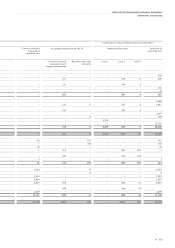 261
261 -
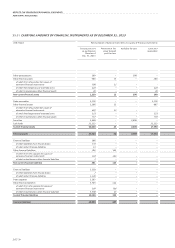 262
262 -
 263
263 -
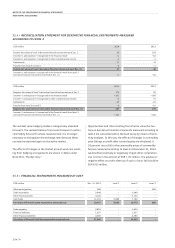 264
264 -
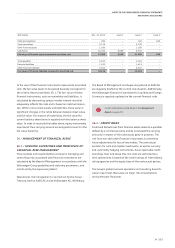 265
265 -
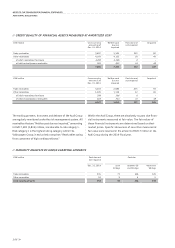 266
266 -
 267
267 -
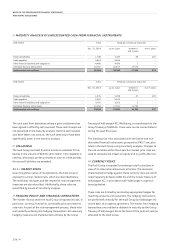 268
268 -
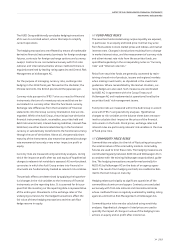 269
269 -
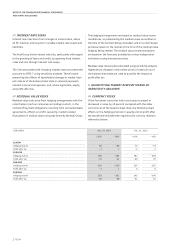 270
270 -
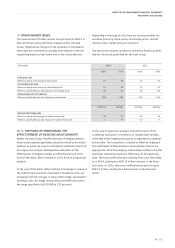 271
271 -
 272
272 -
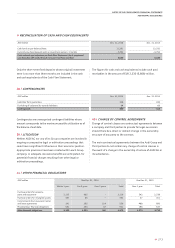 273
273 -
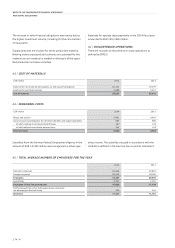 274
274 -
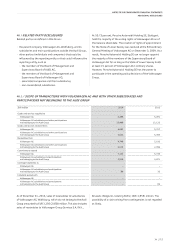 275
275 -
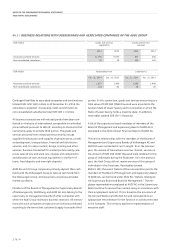 276
276 -
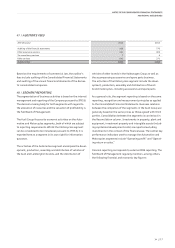 277
277 -
 278
278 -
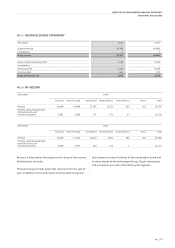 279
279 -
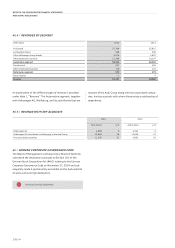 280
280 -
 281
281 -
 282
282 -
 283
283 -
 284
284 -
 285
285 -
 286
286 -
 287
287 -
 288
288 -
 289
289 -
 290
290 -
 291
291 -
 292
292 -
 293
293 -
 294
294
 |
 |
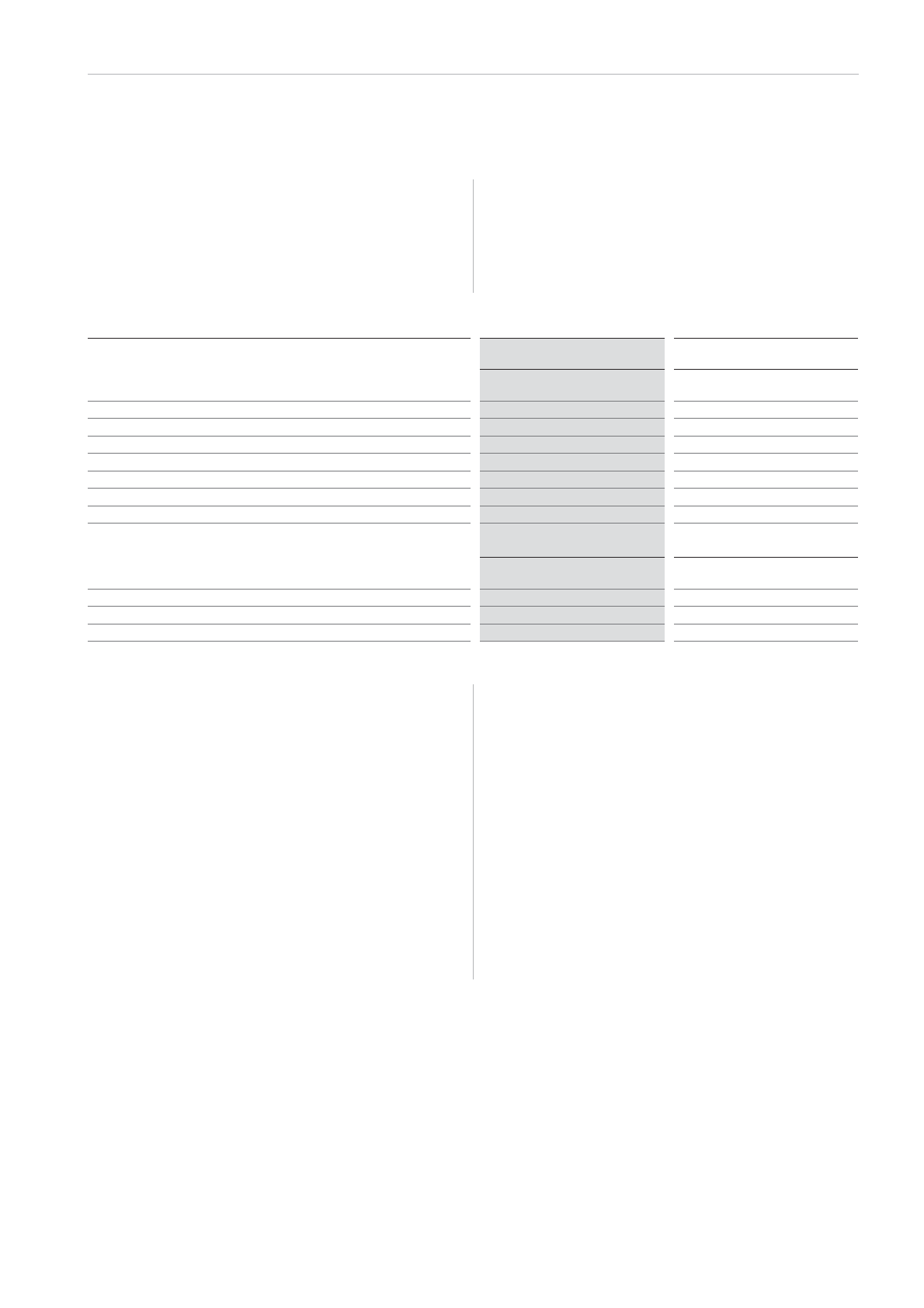
NOTES TO THE CONSOLIDATED FINANCIAL STATEMENTS
ADDITIONAL DISCLOSURES
>>
271
///
OTHER MARKET RISKS
The measurement of other market risks pursuant to IFRS 7 is
also carried out using sensitivity analyses within the Audi
Group. Hypothetical changes to risk variables on the balance
sheet date are examined to calculate their impact on the cor-
responding balance sheet items and on the result after tax.
Depending on the type of risk, there are various possible risk
variables (primarily share prices, commodity prices, market
interest rates, market prices of used cars).
The sensitivity analyses carried out enable the following other
market risks to be quantified for the Audi Group:
EUR million
2014 2013
+10% – 10% +10% – 10%
Fund price risks
Effects on equity with change in share prices 21 – 30 12 – 13
Commodity price risks
Effects on equity with change in commodity prices 18 – 18 15 – 15
Effects on profit after tax with change in commodity prices 42 – 42 30 – 30
Residual value risks of used cars
Effects on profit after tax with change in market prices 194 – 194 153 – 153
+100 bps – 100 bps +100 bps – 100 bps
Interest rate change risks
Effects on equity with change in market interest rate – 74 74 – 26 20
Effects on profit after tax with change in market interest rate 3 –3 – 12 7
36.5 /
METHODS OF MONITORING THE
EFFECTIVENESS OF HEDGING RELATIONSHIPS
Within the Audi Group, the effectiveness of hedging relation-
ships is evaluated prospectively using the critical terms match
method, as well as by means of statistical methods in the form
of a regression analysis. Retrospective evaluation of the
effectiveness of hedges involves an effectiveness test in the
form of the dollar offset method or in the form of a regression
analysis.
In the case of the dollar offset method, the changes in value of
the underlying transaction, expressed in monetary units, are
compared with the changes in value of the hedge, expressed in
monetary units. All hedge relationships were effective within
the range specified in IAS 39 (80 to 125 percent).
In the case of regression analysis, the performance of the
underlying transaction is viewed as an independent variable,
while that of the hedging transaction is regarded as a depend-
ent variable. The transaction is classed as effective hedging if
the coefficients of determination and escalation factors are
appropriate. All of the hedging relationships verified using this
statistical method proved to be effective as of the reporting
date. There was ineffectiveness resulting from cash flow hedg-
es in 2014, leading to a EUR 15 million increase in the finan-
cial result. In 2013, there was ineffectiveness amounting to
EUR 13 million, leading to a deterioration in the financial
result.
